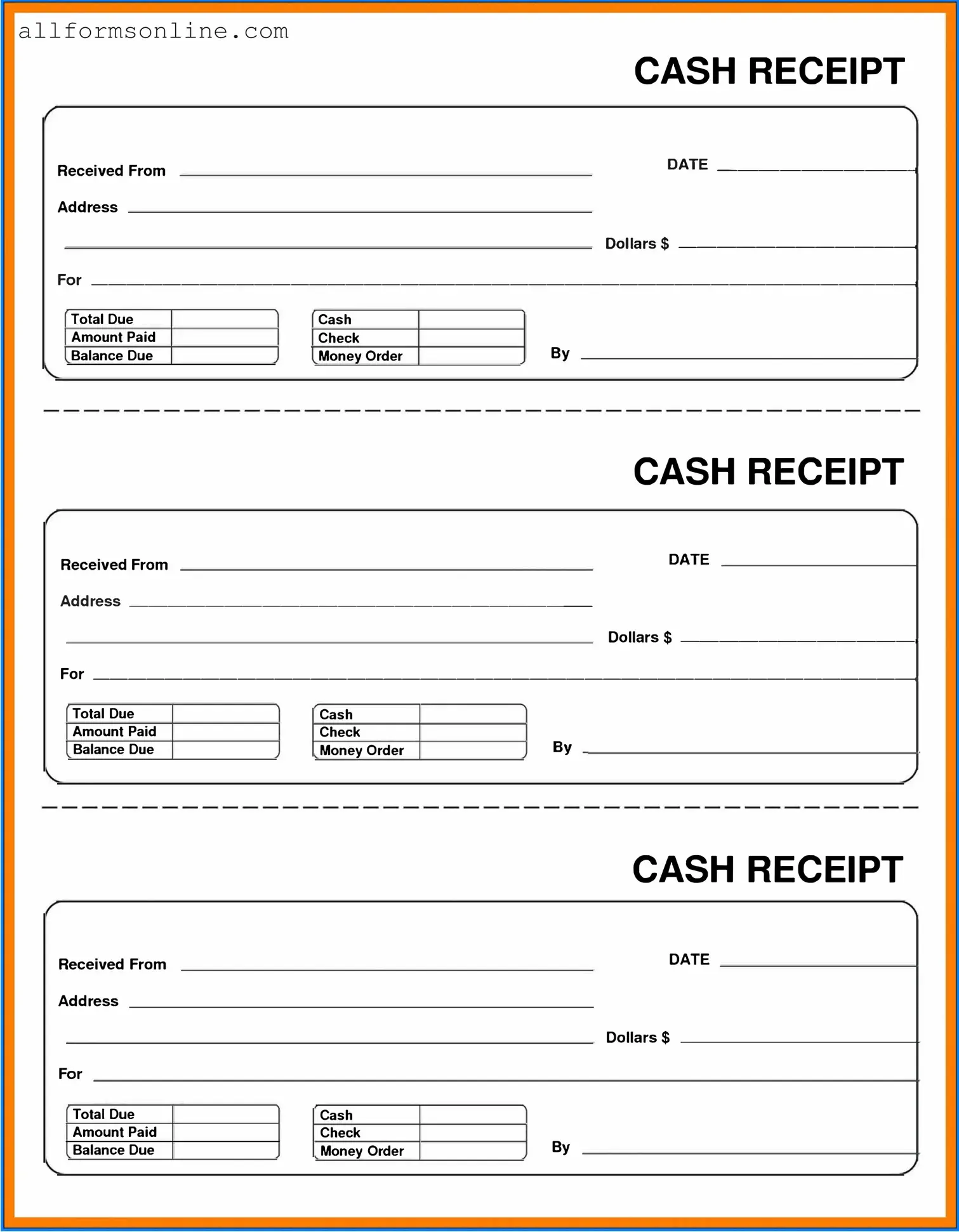What is a Cash Receipt form?
A Cash Receipt form is a document used to acknowledge the receipt of cash payments. It serves as proof for both the payer and the payee that a transaction has taken place. This form typically includes details such as the date of the transaction, the amount received, the name of the payer, and a description of the purpose of the payment.
Why is a Cash Receipt form important?
This form is crucial for record-keeping and accounting purposes. It helps businesses track cash inflows and provides a clear record of transactions. For individuals or businesses receiving payments, it offers protection by documenting that a payment has been made, which can be useful in case of disputes or audits.
Who should use a Cash Receipt form?
Any individual or business that receives cash payments can benefit from using a Cash Receipt form. This includes retail businesses, service providers, and freelancers. It is particularly useful for transactions that do not involve electronic payment methods, such as checks or credit cards.
What information should be included in a Cash Receipt form?
A well-structured Cash Receipt form should include the following details: the date of the transaction, the amount received, the name of the payer, the purpose of the payment, and any relevant invoice or reference number. Additionally, it may include the signature of the person receiving the cash to further validate the transaction.
How can I create a Cash Receipt form?
You can create a Cash Receipt form using various templates available online or by designing one from scratch. Many word processing programs offer templates that can be customized to fit your needs. Ensure that it includes all necessary fields and is easy to read to facilitate smooth transactions.
Is it necessary to provide a copy of the Cash Receipt form to the payer?
Yes, it is essential to provide a copy of the Cash Receipt form to the payer. This ensures they have proof of their payment for their records. It also fosters transparency and trust between the parties involved in the transaction.
Can a Cash Receipt form be used for non-cash transactions?
No, a Cash Receipt form is specifically designed for cash transactions. For non-cash payments, such as checks or electronic transfers, different forms or receipts should be used. Each type of transaction has its own documentation requirements to ensure accurate record-keeping.
